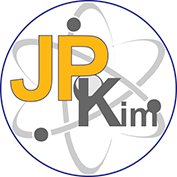Development of innovative electronic student worksheet (E-LKPD) based on somatic auditory visual intellectual (SAVI) on salt hydrolysis topic
DOI:
https://doi.org/10.24114/jpkim.v16i3.65191Keywords:
E-LKPD, Innovative, SAVI model, Salt hydrolysisAbstract
A low understanding of salt hydrolysis and a lack of mastery of mathematics in the calculation section is a problem in learning chemistry. Therefore, this research aim is to produce a good electronic student worksheet (E-LKPD) based on SAVI learning model by determining the quality of LKPD in terms of (1) feasibility and (2) student response. This research and development (R&D) used a 4D development model that was modified to 3D. The research instruments used were interview and validation sheets, test items in the E-LKPD, and student response questionnaires. The research sample consisted of 10 students of class XI MIPA. The results showed that (1) the developed E-LKPD has good quality because it met valid criteria with a percentage of 90% in terms of material and 87% in terms of media. The average score of E-LKPD effectiveness is 78 (high criteria), and practically average score of E-LKPD based on students' response questionnaire is 94.4%; (2) students said that E-LKPD can help them learn and the material is exposed clearly (92.5%), can be used for independent study (97.5%), and the design of the E-LKPD is attractive (95%). Based on the research results, SAVI-based innovative E-LKPD can be used in chemistry learning on salt hydrolysis topics.References
Akbar, S. D. (2013). Instrumen perangkat pembelajaran, Bandung, Rosdakarya.
Andina, R. E., Ridwan, A., & Rahmawati, Y. (2017). Analisis model mental siswa pada materi hidrolisis garam di Klaten. Jurnal Riset Pendidikan Kimia (JRPK), 7(2), 144-152. https://doi.org/10.21009/JRPK.072.08
Artini, N., Suarni, N. & Parmiti, D. (2023). Efektivitas pengembangan E-LKPD dalam upaya meningkatkan motivasi belajar materi tematik siswa kelas V sekolah dasar. PENDASI Jurnal Pendidikan Dasar Indonesia, 7, 36-45. https://doi.org/10.23887/jurnal_pendas.v7i1.1758
Dapa, A. N., & Kiriweno, H. B. (2019). How to Implement the Savi Learning Model for Students with Reading Difficulties. Universal Journal of Educational Research, 7(9A), 44-55. https://doi.org/10.13189/ujer.2019.071606
Gregory, R. J. (2004). Psychological testing: History, principles, and applications. Pearson Education India.
Herwina, W. (2020). Identifikasi kebutuhan belajar dan pengembangan kurikulum. Hasil Penilaian Peer Review.
Novita, A. L., & Madjdi, A. H. (2024). The influence of the PjBL and savi model on students' critical thinking. ASEANA Science and Education Journal, 4(1), 12-15. https://doi.org/10.53797/aseana.v4i1.2.2024
Payadnya, I. P. A. A., Hermawan, I. M. S., Wedasuwari, I. A. M., Rulianto, S. P., & Jayantika, I. G. A. N. T. (2022). Panduan lengkap penelitian tindakan kelas (PTK). Deepublish.
Pranowo, M. I., Linda, R., & Haryati, S. (2021). Pengembangan LKPD kimia berbasis science, environment, technology, and society (SETS) materi laju reaksi. JRPK: Jurnal Riset Pendidikan Kimia, 11(1), 41–45. https://doi.org/10.21009/jrpk.111.07
Purwanto, P. (2010). Evaluasi hasil belajar. Yogyakarta: Pustaka Pelajar.
Puspita, V., & Dewi, I. P. (2021). Efektifitas E-LKPD berbasis pendekatan investigasi terhadap kemampuan berfikir kritis siswa sekolah dasar. Jurnal Cendekia : Jurnal Pendidikan Matematika, 5(1), 86–96. https://doi.org/10.31004/cendekia.v5i1.456
Retnawati, H. (2016). Analisis kuantitatif instrumen penelitian (panduan peneliti, mahasiswa, dan psikometrian). Parama publishing.
Sari, E., Syamsurizal, S., & Asrial, A. (2016). Pengembangan lembar kegiatan peserta didik (LKPD) berbasis karakter pada mata pelajaran kimia SMA. Edu-Sains: Jurnal Pendidikan Matematika dan Ilmu Pengetahuan Alam, 5(2). https://doi.org/10.22437/jmpmipa.v5i2.3388
Setiawati, H., Setiawati, A., Ismirawati, N., & Syam, A. (2023). Development of Student Worksheets (LKPD) based on critical thinking skills environmental change and waste recycling materials. Pegem Journal of Education and Instruction, 13(4), 1-12. https://doi.org/10.47750/pegegog.13.04.01
Simanjuntak, R. M., Abudarin, A., & Karelius, K. (2020). Kemampuan siswa memperoleh dan memahami konsep hidrolisis garam dalam pembelajaran menggunakan LKS berbasis belajar penemuan pada siswa kelas XI SMAN 2 Palangka Raya tahun ajaran 2018/2019. Gamaproionukleus, 1(1), 16–29. https://doi.org/10.37304/jpmipa.v1i1.2073
Sugiyono, D. (2013). Metode penelitian pendidikan pendekatan kuantitatif, kualitatif dan R&D. Bandung: Alfa Beta.
Umami, M. Z., Wardani, S., & Kurniawan, C. (2020). Analysis of salt hydrolysis misconception with false statements after application of guided inquiry assisted by e-laboratory instruction. Journal of Innovative Science Education, 9(3), 267-274. https://doi.org/10.15294/jise.v8i3.35931
Downloads
Published
How to Cite
Issue
Section
License

This work is licensed under a Creative Commons Attribution 4.0 International License.
Authors published in this journal agree to the following terms:
- The copyright of each article is retained by the author (s).
- The author grants the journal the first publication rights with the work simultaneously licensed under the Creative Commons Attribution License, allowing others to share the work with an acknowledgment of authorship and the initial publication in this journal.
- Authors may enter into separate additional contractual agreements for the non-exclusive distribution of published journal versions of the work (for example, posting them to institutional repositories or publishing them in a book), with acknowledgment of their initial publication in this journal.
- Authors are permitted and encouraged to post their work online (For example in the Institutional Repository or on their website) before and during the submission process, as this can lead to productive exchanges, as well as earlier and larger citations of published work.
Jurnal Pendidikan Kimia is licensed under a Creative Commons Attribution 4.0 International License













